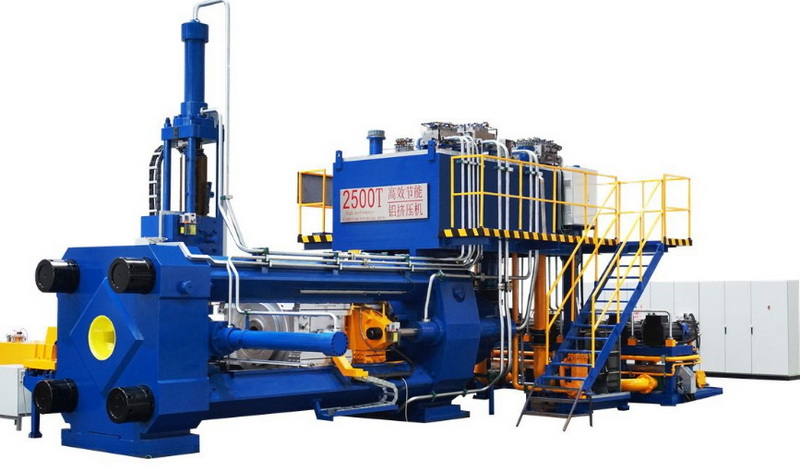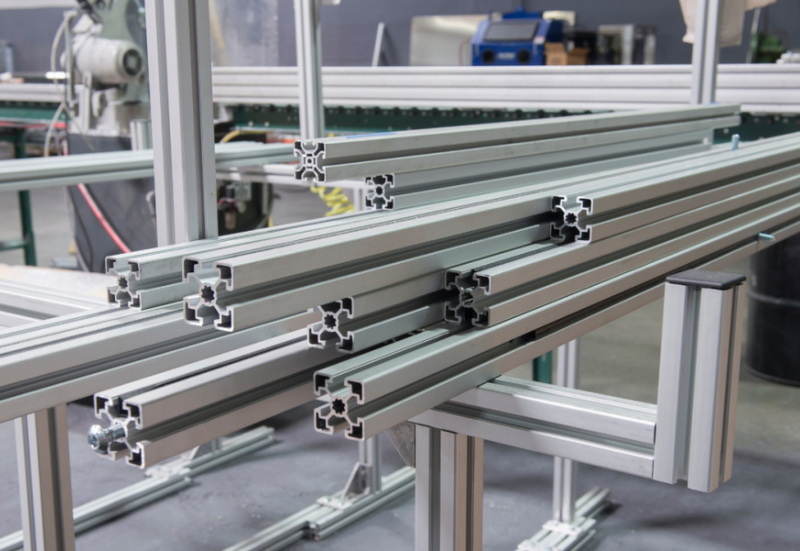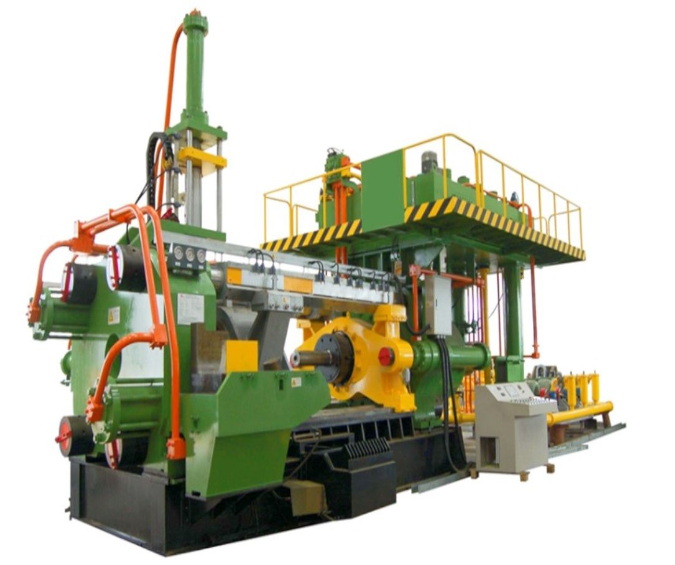Content Menu
● Understanding Aluminum Extrusion
● Types of Affordable Aluminum Extrusion Sections
● Factors Affecting the Cost of Aluminum Extrusion
● Finding Affordable Aluminum Extrusion Services
● Steps to Reduce Aluminum Extrusion Costs
● Case Studies
>> Case Study 1: Automotive Industry
>> Case Study 2: Construction Industry
>> Case Study 3: Electronics Industry
● The Role of Aluminum Extruders Council (AEC)
● Premier Aluminum Extrusions Manufacturer
● Advantages of Aluminum Extrusion
● Conclusion
● FAQ
>> 1. What is aluminum extrusion?
>> 2. What are the benefits of using aluminum extrusion?
>> 3. How can I find affordable aluminum extrusion services near me?
>> 4. What factors affect the cost of aluminum extrusion?
>> 5. What is the Aluminum Extruders Council (AEC)?
● Citations:
Aluminum extrusion is a versatile manufacturing process used to create complex shapes and profiles with precision, making it suitable for various applications across industries like automotive, aerospace, construction, and electronics. From intricate heat sinks in electronic devices to robust structural components in buildings, aluminum extrusion offers a blend of strength, lightweight properties, and design flexibility. However, the cost can sometimes be a limiting factor. Fortunately, several affordable aluminum extrusion options are available to help you achieve your project goals without exceeding your budget. This article explores these options, providing insights into how to find the best "aluminum extruder near me" without breaking the bank.

Understanding Aluminum Extrusion
Aluminum extrusion involves shaping aluminum alloy by forcing it through a die with a specific cross-sectional design. Imagine squeezing toothpaste from a tube—the die acts like the nozzle, determining the shape of the extruded material. This process creates elongated parts with uniform cross-sections, which can be solid, hollow, or semi-hollow, depending on the die's configuration.
The Aluminum Extrusion Process Overview:
1. Die Preparation: The entire process hinges on the die. It is meticulously designed and crafted to the exact specifications of the desired profile. This is often a custom process, but utilizing standard dies where possible can significantly reduce costs. The material used for the die is typically high-strength steel, capable of withstanding the immense pressure and heat of the extrusion process.
2. Billet Preheating: The aluminum billet, a solid cylinder of aluminum alloy, is preheated to increase its malleability. This step is critical because it reduces the force required to push the aluminum through the die, ensuring a smooth and consistent extrusion. The melting point of aluminum is approximately 1,220°F (660°C). Extrusion operations typically occur with the billet heated to over 700°F (375°C) and potentially as high as 930°F (500°C), depending on the alloy. Precise temperature control is essential to achieve the desired material properties and prevent defects.
3. Extrusion: The preheated billet is transferred to the extrusion press and forced through the die. A hydraulic ram applies tremendous pressure, pushing the billet into the container. As pressure increases, the softened aluminum is forced through the die, creating the desired profile. Hydraulic presses can exert from 100 to 15,000 tons of pressure, depending on the size and complexity of the extrusion. The speed of extrusion is carefully controlled to maintain consistency and prevent tearing or deformation.
4. Post-Extrusion Processes: After the aluminum emerges from the die, it undergoes several post-extrusion processes to achieve the final desired properties. The extruded material is guided along a runout table and promptly quenched to cool and set its shape. Quenching rapidly cools the aluminum, increasing its hardness and strength. The profiles are then sheared to manageable lengths and cooled to room temperature for structural stability. Stretching corrects any distortions, ensuring straightness and uniformity. Finally, heat treatment, such as T5 or T6 tempering, is applied to further enhance the mechanical properties of the aluminum, optimizing its strength, hardness, and resistance to corrosion. These post-extrusion processes are vital for achieving the final product's quality and performance.
Types of Affordable Aluminum Extrusion Sections
One of the keys to achieving cost-effective aluminum extrusion lies in selecting the appropriate type of section. Here are a few options that can help you minimize expenses:
1. Hollow Sections: These extrusions have a hollow interior, making them lighter and less expensive than solid sections without sacrificing strength and durability. Hollow sections are ideal for applications where weight reduction is a priority, such as in aerospace or automotive components. The hollow spaces can also be used to route cables or fluids, adding to their versatility.
2. Thin-Walled Sections: As the name suggests, these extrusions have a thin wall thickness, making them more flexible and easier to form while maintaining strength and durability. Thin-walled sections are commonly used in applications where aesthetics are important, such as in architectural elements or consumer electronics. They can also be more easily machined and fabricated, reducing manufacturing costs.
3. Recycled Aluminum: Opting for recycled aluminum is not only sustainable and environmentally friendly but also less expensive than using virgin aluminum. Recycled aluminum retains the same properties as virgin aluminum but requires significantly less energy to produce, resulting in lower material costs. Using recycled aluminum also contributes to a circular economy, reducing waste and promoting sustainability.
4. Standard Profiles: Choosing standard, off-the-shelf profiles is generally more affordable than creating custom dies. Extruders often have a wide range of standard shapes and sizes available, which can meet the needs of many applications without the added expense of custom tooling.
5. Simple Geometries: Complex shapes require more intricate dies and can increase extrusion time, both of which add to the cost. Opting for simpler, more straightforward geometries can streamline the extrusion process and reduce expenses.
Factors Affecting the Cost of Aluminum Extrusion
Several factors can influence the cost of aluminum extrusion, and understanding these factors is crucial for making informed decisions and optimizing your budget:
- Material Costs: The type of aluminum alloy used significantly affects the price. Different alloys have varying compositions and properties, which affect their cost. For example, alloys with higher strength or corrosion resistance may be more expensive. The market price of aluminum also fluctuates, impacting the overall cost.
- Die Design: The complexity of the die design is a major cost driver. Intricate designs with tight tolerances require more precise machining and can increase the cost of die manufacturing. Simple, standard designs are generally more affordable. The material used for the die, typically high-strength steel, also contributes to the cost.
- Production Volume: Larger production runs generally reduce per-unit costs. This is because the initial setup costs, such as die design and machine setup, are spread over a larger number of units, resulting in economies of scale. Small production runs, on the other hand, may incur higher per-unit costs due to these fixed expenses.
- Surface Finishing: Additional surface finishes, such as painting, anodizing, or powder coating, add to the expense. These finishes can enhance the appearance, corrosion resistance, and durability of the aluminum extrusions but also require additional processing steps and materials. The choice of finish should be carefully considered based on the application requirements and budget constraints.
- Tolerances: Tight tolerances require more precise manufacturing processes, which can increase costs. Specifying unnecessarily tight tolerances should be avoided to minimize expenses. The required tolerances should be carefully evaluated based on the functional requirements of the part.
- Secondary Operations: Additional operations, such as cutting, drilling, machining, or welding, can add to the cost of aluminum extrusion. These operations may be necessary to achieve the final desired shape or functionality of the part. Minimizing the need for secondary operations through careful design can help reduce overall costs.

Finding Affordable Aluminum Extrusion Services
If you're looking for "aluminum extruder near me," here's how to find affordable options and get the best value for your money:
1. Online Search: Utilize search engines like Google, Bing, or DuckDuckGo to find local aluminum extrusion companies. Refine your search queries to include terms like "affordable aluminum extrusion," "cheap aluminum profiles," or "budget-friendly aluminum extruders." Look for companies that offer cost-effective solutions and competitive pricing.
2. Request Quotes: Contact multiple extruders and request detailed quotes for your project. Provide them with detailed specifications, drawings, and quantities to ensure accurate pricing. Compare pricing, lead times, and services offered by each company. Don't hesitate to negotiate prices or ask for discounts, especially for large orders.
3. Check for Standard Profiles: Opt for standard aluminum profiles whenever possible to avoid the costs associated with custom die design and manufacturing. Standard profiles are readily available and can often meet the needs of many applications without the added expense of customization. Dajcor Aluminum, for example, has thousands of standard aluminum extrusion dies available.
4. Consider T-Slot Aluminum: T-slot aluminum is a versatile and cost-effective alternative to traditional aluminum extrusions. It features a series of T-slots that allow for easy assembly and customization using standard fasteners. Parco Inc. offers T-slot aluminum as an alternative to leading manufacturers, providing compatible fractional and metric aluminum T-slot profiles. T-slot aluminum is ideal for building frames, enclosures, and other structures.
5. Local vs. International: Consider both local and international suppliers. While local suppliers may offer faster lead times and easier communication, international suppliers may offer lower prices. Evaluate the pros and cons of each option based on your project requirements and budget constraints.
6. Ask for Material Certification: Ensure the aluminum extruder can provide material certifications for the alloy they are using. This guarantees the quality of the materials used in your project.
Steps to Reduce Aluminum Extrusion Costs
1. Optimize Design: Simplify the design of your aluminum extrusion to reduce material usage and machining requirements. Minimize complex features, sharp corners, and tight tolerances. Consider using standard profiles and geometries whenever possible. A well-optimized design can significantly reduce manufacturing costs.
2. Choose the Right Alloy: Select an appropriate aluminum alloy that balances cost and performance. Not all aluminum alloys are created equal, and some are more expensive than others. Choose an alloy that meets the functional requirements of your application without exceeding your budget. Consult with your aluminum extruder to determine the best alloy for your needs.
3. Minimize Waste: Work with extruders who focus on reducing waste and recycling materials. Efficient extruders have processes in place to minimize scrap and recycle excess material, which can lower costs. Ask about their waste reduction initiatives and sustainability practices.
4. Plan Ahead: Proper planning is essential for minimizing errors and rework, which can significantly increase costs. Develop a detailed project plan that includes clear specifications, timelines, and quality control measures. Communicate effectively with your aluminum extruder to ensure that your requirements are fully understood. Anticipate potential challenges and develop contingency plans to mitigate risks.
Case Studies
Case Study 1: Automotive Industry
- Challenge: An automotive manufacturer needed to produce lightweight, durable components for electric vehicles to improve range and performance while minimizing costs.
- Solution: They opted for hollow aluminum extrusions made from recycled aluminum. This reduced material costs and vehicle weight, improving fuel efficiency and lowering the vehicle's environmental impact. The use of advanced simulation techniques also helped to optimize the design and minimize material usage.
- Results: The manufacturer saved 20% on material costs compared to using solid aluminum components and reduced the vehicle's weight by 15%, resulting in improved range and performance. The use of recycled aluminum also reduced their carbon footprint, contributing to their sustainability goals.
Case Study 2: Construction Industry
- Challenge: A construction company needed affordable, weather-resistant materials for window frames in a large residential project. The materials had to meet stringent building codes and withstand harsh weather conditions.
- Solution: They chose thin-walled aluminum extrusions with a durable powder-coated finish. This provided the necessary durability, aesthetic appeal, and weather resistance at a lower cost than traditional materials like wood or steel. The powder coating provided excellent protection against corrosion and UV degradation, ensuring a long service life.
- Results: The company saved 10% on material costs compared to using traditional materials without compromising quality or performance. The aluminum window frames also required less maintenance, reducing long-term costs for homeowners.
Case Study 3: Electronics Industry
- Challenge: An electronics manufacturer needed to produce heat sinks for high-powered electronic devices at a competitive price point. The heat sinks had to be lightweight, efficient, and cost-effective.
- Solution: They used complex aluminum extrusions with intricate fin designs to maximize surface area for heat dissipation. By optimizing the fin design and using a high-conductivity aluminum alloy, they were able to achieve excellent thermal performance at a low cost.
- Results: The manufacturer reduced the cost of heat sinks by 15% compared to using traditional machining methods while maintaining the required thermal performance. The lightweight aluminum heat sinks also helped to reduce the overall weight of the electronic devices.
The Role of Aluminum Extruders Council (AEC)
The Aluminum Extruders Council (AEC) is an international trade association dedicated to advancing the effective use of aluminum extrusion in North America. AEC provides valuable information about extrusion characteristics, applications, environmental benefits, design considerations, and technology advancements to users, product designers, engineers, and the academic community. They also enhance the ability of their members to meet market demands through knowledge sharing, best practices, and industry-leading training programs. The AEC serves as a valuable resource for anyone involved in the aluminum extrusion industry.
Premier Aluminum Extrusions Manufacturer
Wellste is a reputable manufacturer that offers a comprehensive range of aluminum extrusions and can handle 1xxx, 2xxx, 3xxx, 5xxx, 6xxx, and 7xxx series extrusions. They are known for their fast response times, high-quality products, and excellent customer service. Wellste is ISO 9001-2008 and ISO 14001-2004 authorized, ensuring that their products meet the highest standards of quality and environmental responsibility. They offer custom extrusion services to meet the unique needs of their clients.
Advantages of Aluminum Extrusion
- Versatility: Can create complex shapes and profiles that are difficult or impossible to achieve with other manufacturing processes.
- Cost Savings: Affordable options like hollow and thin-walled sections, as well as the use of recycled aluminum, can significantly reduce costs.
- Sustainability: Use of recycled aluminum promotes environmental sustainability and reduces energy consumption.
- Durability: Provides strong and durable parts that can withstand harsh environmental conditions.
- Lightweight: Aluminum is a lightweight material, making it ideal for applications where weight reduction is a priority.
- Corrosion Resistance: Aluminum is naturally corrosion-resistant, making it suitable for outdoor applications and environments with high humidity.
- Design Flexibility: Aluminum extrusion offers a high degree of design flexibility, allowing for the creation of complex and customized shapes.
Conclusion
Finding affordable aluminum extruder options involves a strategic approach that considers various factors, from understanding the different types of extrusions available to optimizing your design and choosing the right partners. By carefully evaluating material costs, die design complexity, production volume, and surface finishing options, you can achieve significant cost savings without sacrificing quality or performance. Organizations like the Aluminum Extruders Council (AEC) offer valuable resources, industry insights, and support to help you make informed decisions and navigate the complexities of the aluminum extrusion market. When searching for "aluminum extruder near me," remember to compare quotes from multiple suppliers, explore the possibility of utilizing standard profiles, and investigate alternative solutions like T-slot aluminum to maximize your budget and achieve your project goals efficiently and effectively. The key to success lies in thorough planning, careful evaluation, and a willingness to explore all available options.

FAQ
1. What is aluminum extrusion?
Aluminum extrusion is a manufacturing process where aluminum alloy is shaped by forcing it through a die with a specific cross-sectional profile. This creates elongated parts with uniform shapes and consistent dimensions.
2. What are the benefits of using aluminum extrusion?
Aluminum extrusion offers numerous benefits, including versatility, cost savings, sustainability through recycled aluminum, and durability for various applications. It is also a lightweight and corrosion-resistant material, making it ideal for a wide range of uses.
3. How can I find affordable aluminum extrusion services near me?
To find affordable aluminum extrusion services near you, start by searching online for local companies. Request detailed quotes from multiple extruders, check for the availability of standard profiles, and consider alternatives like T-slot aluminum. Don't hesitate to negotiate prices and explore all available options to maximize your budget.
4. What factors affect the cost of aluminum extrusion?
Several factors can influence the cost of aluminum extrusion, including material costs, die design complexity, production volume, surface finishing requirements, and the need for secondary operations. Understanding these factors is essential for making informed decisions and optimizing your budget.
5. What is the Aluminum Extruders Council (AEC)?
The AEC is an international trade association dedicated to advancing the effective use of aluminum extrusion in North America. It provides information, resources, and support for the industry, promoting best practices and fostering innovation. The AEC serves as a valuable resource for anyone involved in the aluminum extrusion process.
Citations:
[1] https://www.naviewaluminium.com/blogs/detail/affordable-aluminum-extrusion-section-options-for-every-budget.html
[2] https://americandouglasmetals.com/2024/05/19/understanding-the-aluminum-extrusion-process/
[3] https://www.wellste.com/aluminum-extrusions/
[4] https://parco-inc.com/product-tag/popular-alternative/
[5] https://aec.org/aluminum-extrusion-process
[6] https://tricityextrusion.com/roxyfileman/uploads/AEC_2018_Aluminum_Extrusion_Manual.pdf
[7] https://www.tnutz.com/product-category/15-series-extrusions/
[8] https://www.gabrian.com/what-is-aluminum-extrusion-process/
[9] https://dajcor.com/extrusion
[10] https://www.extrusion.net/publications






















